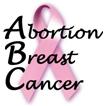Cruelest myth of all
Breast Cancer & Pregnancy
The cruelest myth of all: when breast cancer strikes during pregnancy.
By Dr. Joel Brind
Popular women’s magazines talk about breast cancer all the time. Sadly, they give almost no coverage to the evidence linking abortion to the incidence of breast cancer, as was prominently noted by Evan Gahr in the August 21 Wall Street Journal 1 . Every so often, a story will run on the tragic situation of women who are diagnosed with gestational breast cancer, that is, breast cancer when it occurs during pregnancy. Even more tragic is the characterization of this difficult situation as “a mother’s dangerous choice”: “My life or the baby’s?” Thus was the mother and child relationship put in all too typical adversarial terms in an article by Debra Kent in this year’s May issue of Redbook 2 . The lay reader will get the same story from a popular health magazine written for the doctor’s office waiting room. Check out, for example, the December, 1993 issue of American Health (published by Readers’ Digest), where author Gail McBride 3 quotes advice from Dr. Jeanne Petrek, a breast surgeon at prestigious Sloan Kettering Cancer Center in New York City: “If the cancer is detected early in pregnancy, therapeutic abortion ‘deserves the strongest consideration’”. But the real tragedy here is that this advice, whether given in the waiting room or the hospital room, is unsound. The very idea that a woman’s chances of long term survival are maximized by removing her fetus, which “allows full conventional treatment” (to quote Dr. Petrek from McBride’s article again) is simply not borne out by over half a century’s worth of worldwide published data. In fact, the data provide convincing evidence that exactly the opposite is true: saving the baby’s life provides the best chance of saving the mother’s life as well.
It is instructive to consult Dr. Petrek’s own published research on gestational breast cancer, which appeared in the journal Cancer in 1991. In this paper, Dr. Petrek reports on the fate of the 12 cases treated at Sloan-Kettering between 1960 and 1980. Since only four of these patients had undergone “therapeutic abortion”, she concluded there were insufficient data to determine whether the abortions had increased survival in any of the patients. However, in the same paper, Dr. Petrek also reviewed the results of two earlier Sloan-Kettering studies and two recent studies at other hospitals. Her conclusion was conclusive, to wit, that these data “do not show any advantage in survival rate with therapeutic abortion.”
An earlier paper from Israel shows a similarly disturbing discordance between conclusions given by the same doctors in their abstract (which shows up on computer searches) v. in the body of the paper. In their 1982 review in the Journal of Surgical Oncology, Drs. E. Hornstein et al. 4 said in their abstract: “women with breast cancer in their first trimester of pregnancy and in whom axillary lymph nodes are involved, should ... have their pregnancy terminated.” But in the text of the same review, Hornstein et al. flatly advised: “Pregnancy should not be terminated as it does not affect the clinical course and survival rate.”
And even back in 1982, this was hardly news to anyone familiar with the medical literature on the subject. As early as 1956, Drs. White and White reviewed the worldwide medical literature on gestational breast cancer for the Annals of Surgery, and concluded “no definite benefit could be claimed from therapeutic abortion.” 5 Across the Atlantic, Parisian Dr. P. Juret, in his review of the literature up to 1976 6 , was even more definitive: “the total inefficacy of therapeutic abortion is now certain.” This was echoed by Dr. K.W. Schweppe et al. in their 1980 German review of the worldwide literature 7 : “There is no medical indication for an abortion.”
Back in the US, Dr. William Donegan of the Medical College of Wisconsin acknowledged in his 1977 review 8 , that in most cases, “Most authorities now deny the value of therapeutic abortion and accumulating data substantiate this view.” In addition to this concordance of data from a multiplicity of small studies extending over half a century, there is also one particular place where the issue of pregnancy-associated breast cancer has been studied so carefully for so long as to generate statistically reliable results on its own: the Princess Margaret Hospital of Toronto, Canada. Gestational breast cancer only represents about 1-2% of all breast cancer cases, but Princess Margaret has been accumulating case histories since 1931, and publishing the results every several years.
The most recent paper, authored by Drs. R.M. Clark and T. Chua 9 , and published in 1989, reported on the fate of 154 patients with gestational breast cancer. It should be noted that in gestational breast cancer, the cancer is usually discovered at an advanced stage (since symptoms are masked by the pregnancy), and the prognosis is generally poor. Thus, in the Toronto series (whose data are summarized in the graph below), only 20 percent of the patients who carried their pregnancies to term were alive 20 years later. But strikingly, all 21 patients who had undergone “therapeutic abortion” were dead within eleven years. But why, then, if there is no evidence that having an abortion helps the woman with breast cancer, do many doctors (even Drs. Clark and Chua) still recommend “therapeutic abortion” if the cancer is advanced and discovered during the first trimester? This question was best answered by Kaiser-Permanente surgeon Dr. Philip Nugent and colleagues in 1985 10 : “Termination of pregnancy we would recommend in these (advanced cancer) groups, not because of the effect of the pregnancy on the breast cancer, but rather the detrimental effect the chemotherapy (or radiation therapy) may have on the fetus.”
This widely prevalent line of thinking raises even an even more troubling question, to wit: How can medical practice in a civilized society countenance the oxymoronic use of the word “therapeutic”, i.e., in the context of killing a fetus for its own good? Notwithstanding the lack of a good answer to this question, there is yet another body of medical evidence which makes the question even more compelling; evidence which demonstrates a remarkable capacity for the fetus to withstand agressive maternal cancer therapy without ill effect. And again, this body of medical evidence goes back quite a few years. In his excellent 1981 review of fetal effects of cancer chemotherapeutic drugs, Dr. Hugh Barber 11 of Lenox Hill Hospital in New York observed the following clear trends:
1) “After the first trimester, following the anlage for all organs, administration of anticancer drugs singly or in combination does not appear to increase the rate of congenital anomaly (birth defects)”.
2) Although avoidance of chemotherapy in the first trimester is recommended, “the data reviewed herein do not indicate that harmful effects are inevitable. When chemotherapy is required in early pregnancy, the physician may be able to minimize the additional risk of congenital malformations by avoiding combination therapy or use of folic acid antagonists such as methotrexate.”
Hard data back up these conclusions. A lengthy 1983 review by Dr. Marc Wallack et al 12 of Washington University School of Medicine in St. Louis, Missouri, cited data from a 1968 review by Nicholson, which documented fetal outcome in 123 pregnancies in which chemotherapy had been given. In the 58 cases in which such therapy was given in the second or third trimester, all the babies were born normal. In the 55 cases in which chemotherapy (other than with folic acid antagonists, as noted above) was given in the first trimester, only 4 babies were born with abnormalities. As for radiation therapy during pregnancy, Wallach et al 12 noted a similar fetal resistance to damage, citing reviews from the 1970’s. They observed that the incidence of fetal abnormalities (mainly microcephaly, or decreased brain size) was uncommon after 8 weeks gestation, and “extremely rare” after 30 weeks. Human data are scant, Wallach et al acknowledged 12 , but they parallel the effects observed experimentally in rodents.
Not surprisingly, a check of data from cases from more recent years reflects the steady improvement of both fetal/neonatal care and breast cancer therapy. Last year, Dr. David Berry of Baylor College of Medicine in Houston, Texas reported his own results to the International Congress on Breast Diseases 13 . Over the previous 7 years, Dr. Berry had treated 22 pregnant breast cancer patients with chemotherapy. Although 4 of the babies were born premature and a few had low birth weight, all are still healthy. As for the mothers, 5 of the 7 who were treated over 5 years ago are still alive. Considering that these women had stage 2 or 3 disease (i.e., the cancer had already spread beyond the breast), wherein 5-year survival is only generally about 50%, Berry’s results are very encouraging. What is discouraging is the fact that these findings were even regarded as something new, something that “now gives women another option” in the words of Dr. Berry, who observed that “current practice among many doctors” includes a “demand” that the pregnancy be terminated (either by abortion, by induction of labor at 28 weeks or more, or by waiting until a term delivery) before offering chemotherapy.
One wonders when the standards of clinical practice will be updated to reflect the certainty of the uselessness of “therapeutic abortion” that is so clearly reflected in the medical literature. It was, after all, over 20 years ago that Dr. Donegan 8 , in reference to the proven futility of “therapeutic abortion”, passed on the then 15-year-old advice of Byrd et al. “that rather than concentrating on terminating the pregnancy, physicians should direct their efforts toward terminating the cancer.” -jb-
- 1. Gahr (1997) Wall St J:Aug. 21, p A14
- 2. Kent (1997) Redbook: May, pp 110-13; 140-2
- 3. McBride(1993) Am Health Dec pp 11-12
- 4. Hornstein et al (1982) J Surg Oncol 21:179-82
- 5. White & White (1956) Ann Surg 144:384
- 6. Juret(1976)J Chir111:211-30(in French)
- 7. Schweppe et al (1980) Z Geburtshilfe Perinatol 184:1-10 (in German)
- 8. a. b. Donegan (1977) Obstet Gynecol 50:244-52
- 9. Clark & Chua(1989)ClinOncol 1:11-18
- 10. Nugent etal(1985)Arch Surg 120:1221-4
- 11. Barber (1981) Obstet Gynecol 58:41S-47S
- 12. a. b. c. Wallach et al (1983) Curr Prob Cancer VII:1-58
- 13. Susman (1996) UPI news report, May 1


